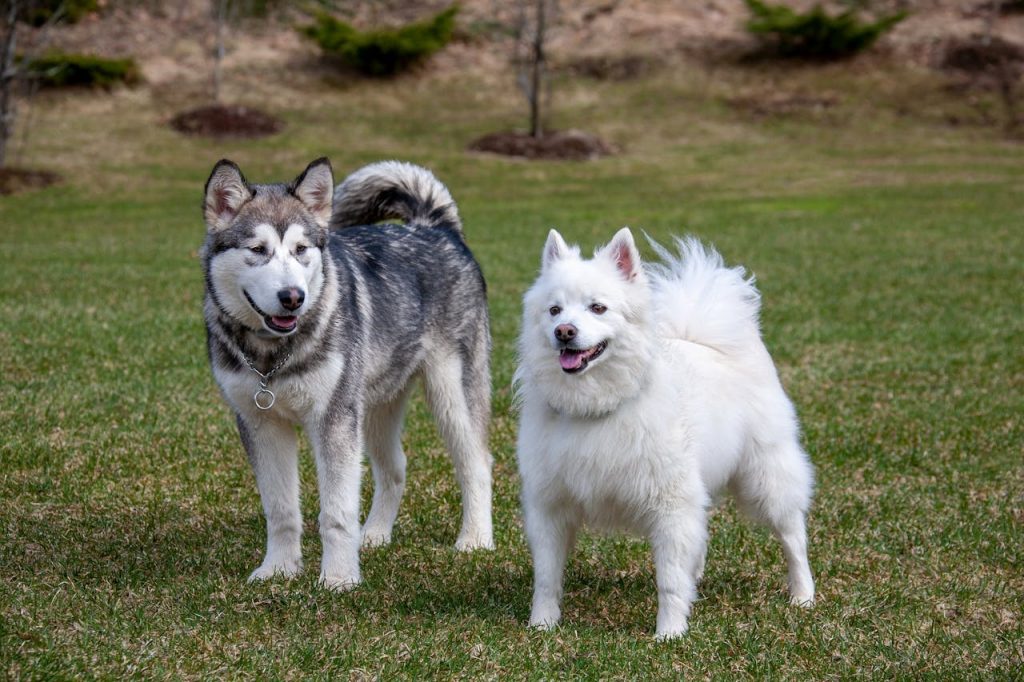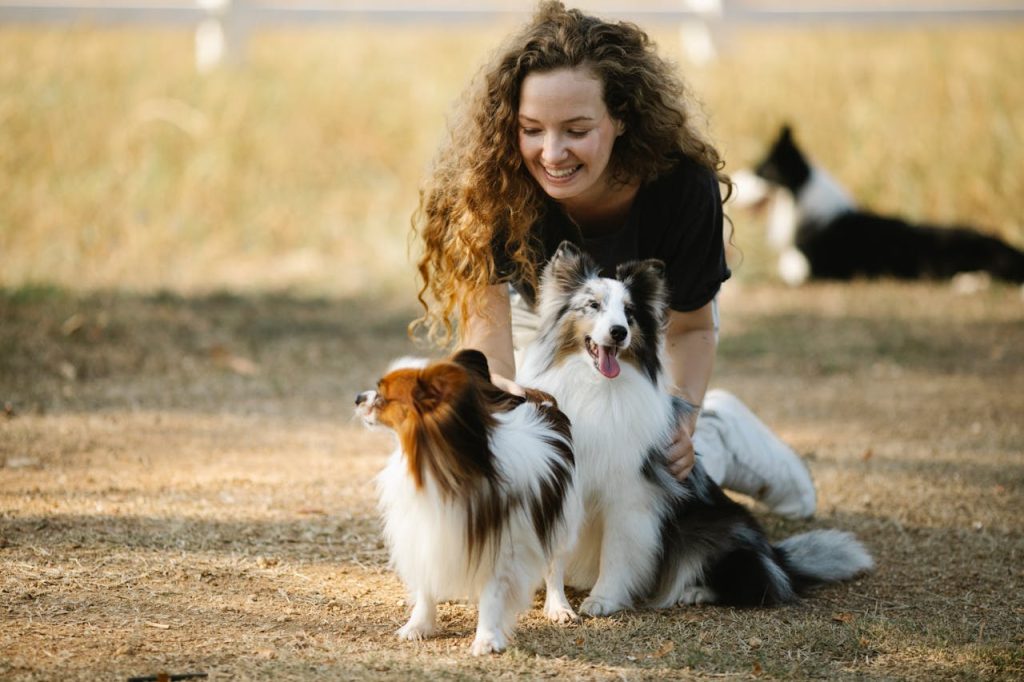Pumpkin, a nutrient-rich squash of the genus Cucurbita, is notable for its high fiber and low calorie content. Often recommended for canine consumption, it aids digestion and regulates bowel movements, making it a beneficial addition to a dog’s diet when prepared plain and served in moderation.
In this post, we’ll see whether you can feed your dog pumpkin, what are its benefits, harmful effects and most importantly, things to know (facts) about pumpkin. Additionally, we would also take a look at the nutritional value and the proper way to feed dogs, pumpkin. Finally, we will answer the most important questions about this topic and share the final verdict.
But, firstly – let’s see, can dogs eat pumpkin?

Table of Contents
ToggleCan Dogs Eat Pumpkin Safely?
Yes, dogs can eat pumpkin safely. Dogs can consume cooked, plain pumpkin in moderation, about 1-2 tablespoons per day for small dogs and 1/4 to 1/2 cup for larger breeds. Remove seeds and skin. Pumpkin is rich in fiber and vitamins, aiding digestion and promoting overall canine health.
Benefits of Feeding Your Dog Pumpkin (5 Benefits)
Pumpkin is beneficial to dogs. Here is a list of 5 several benefits of pumpkin for dogs:
- Digestive Health: Pumpkin is rich in fiber, aiding digestion and alleviating constipation or diarrhea.
- Weight Management: Low in calories, pumpkin can help dogs feel fuller for longer, aiding in weight management.
- Nutrient Boost: Pumpkin is packed with vitamins A, C, and E, promoting overall health and immune function.
- Hydration Support: With its high water content, pumpkin can help keep dogs hydrated, especially beneficial for dry kibble diets.
- Gastrointestinal Support: The soluble fiber in pumpkin can soothe stomach upset and regulate bowel movements, promoting gastrointestinal health.
Harmful Effects of Feeding Your Dog Pumpkin (5 Harms)
Pumpkin can be harmful to dogs. Here is a list of 5 potential harmful effects of pumpkin for dogs:
- Gastrointestinal Upset: Excessive consumption of pumpkin can lead to stomach upset, diarrhea, or vomiting in some dogs.
- Nutritional Imbalance: While pumpkin is nutritious in moderation, overfeeding can disrupt a dog’s balanced diet, leading to nutrient imbalances.
- Allergic Reactions: Some dogs may have allergies or sensitivities to pumpkin, causing skin reactions or gastrointestinal distress.
- Weight Gain: Despite being low in calories, excessive pumpkin consumption can contribute to weight gain in dogs, especially when combined with a high-calorie diet.
- Obstruction Risk: Pumpkin seeds and fibrous portions may pose a choking hazard or risk of intestinal blockage if consumed in large quantities.
Things to Know About (Facts) about Pumpkin
In this section, we will discuss some facts and things to know about pumpkin.
| Attribute | Description |
|---|---|
| Color | Typically orange or yellow, although some varieties may be white or greenish. |
| Shape | Varies from round to elongated, with a smooth or ribbed surface. |
| Flesh Texture | Soft and pulpy, with a moist consistency. |
| Flavor | Mildly sweet with earthy undertones, although taste can vary slightly between varieties. |
| Nutrient Content | Rich in fiber, vitamins A, C, and E, as well as minerals like potassium and iron. |
| Water Content | High water content, contributing to hydration and aiding in digestion. |
| Fiber Content | Contains soluble and insoluble fiber, beneficial for digestive health and regular bowel movements. |
| Caloric Density | Relatively low in calories, making it suitable for dogs on weight management diets. |
| Precautions | Remove seeds and skin before feeding to dogs to avoid choking hazards and digestive issues. |
Nutritional Value of Pumpkin
In this section, we will discuss the nutritional value of pumpkin.
| Nutrient | Amount per 100g | Unit |
|---|---|---|
| Calories | 26 | kcal |
| Carbohydrates | 6 | g |
| Fiber | 0.5 | g |
| Protein | 1 | g |
| Fat | 0.1 | g |
| Vitamin A | 7384 | IU |
| Vitamin C | 9 | mg |
| Vitamin E | 1.06 | mg |
| Potassium | 340 | mg |
| Iron | 0.8 | mg |
How to Feed Dogs Pumpkin?
Here we will explain in four proper steps how to properly feed your dog pumpkin:
- Preparation: Cook fresh pumpkin until soft, then remove the seeds and skin.
- Portioning: Offer small amounts, about 1-2 tablespoons for small dogs and 1/4 to 1/2 cup for larger breeds.
- Incorporation: Mix pumpkin with regular food or serve it plain as a tasty treat.
- Observation: Monitor your dog for any adverse reactions or digestive issues.
Things to Take Care of (Precautions) before feeding your Dog Pumpkin:
- Remove seeds and skin to prevent choking hazards and digestive problems.
- Introduce pumpkin gradually to avoid stomach upset.
- Ensure the pumpkin is plain and not seasoned with spices or additives.
- Consult with your veterinarian if your dog has any pre-existing health conditions or dietary concerns.

Can Dogs Eat Alternative Forms of Pumpkin?
In this section, we will discuss if dogs can eat alternative forms of pumpkin such as pumpkin skin, cooked pumpkin and more.
Can dogs eat Pumpkin Flesh?
Yes, dogs can eat pumpkin flesh. Offer 1-2 tablespoons for small dogs and 1/4 to 1/2 cup for larger breeds. Remove seeds and skin before feeding. Pumpkin flesh is rich in fiber and vitamins, aiding digestion and promoting overall health in dogs.
Can dogs eat Pumpkin Seeds?
It depends. Pumpkin seeds, when unsalted and roasted, can be fed in small amounts as an occasional treat. However, too many seeds may cause digestive upset or blockages. Offer seeds in moderation as a snack for dental health and essential fatty acids.
Can dogs eat Pumpkin Skin?
Yes, dogs can eat pumpkin skin if it’s cooked until soft. However, it’s best to remove the skin before feeding to avoid choking hazards or digestive issues. Pumpkin skin contains some nutrients but is primarily composed of indigestible fiber.
Can dogs eat Cooked Pumpkin?
Yes, dogs can eat cooked pumpkin. Offer small amounts mixed with regular food or as a standalone treat. Cooked pumpkin is easy to digest and can help regulate bowel movements due to its high fiber content. Remove seeds and skin before feeding to avoid gastrointestinal upset.
What are the Fruits other than Pumpkin that Dogs Can Eat?
Here is a list of other fruits that your dog can eat:
- Apple
- Blueberries
- Strawberries
- Watermelon
- Cantaloupe
- Pineapple
- Mango
- Pear
- Raspberry
- Blackberry
Frequently Asked Questions (FAQs)
In this section, we will discuss some frequently asked questions regarding pumpkin and feeding them to dogs.
What constitutes a safe amount of pumpkin for dogs to consume?
A safe amount of pumpkin for dogs is a few tablespoons, depending on the size of the dog. This gourd, low in calories and high in fiber, contrasts with avocados, which are higher in fat and not recommended for dogs.
Is pumpkin beneficial for all dog breeds?
Yes, pumpkin is beneficial for all dog breeds as it aids in digestion and can help regulate bowel movements. However, unlike chocolate, which is toxic to dogs, pumpkin is a safe, nutritious supplement.
How does pumpkin compare to carrots in terms of fiber content for dogs?
Pumpkin generally contains more fiber per serving than carrots, making it superior for canine digestive health. Carrots, though also healthy, offer less fiber but are richer in beta-carotene compared to pumpkins.
What are some other safe vegetables that dogs can eat?
Safe vegetables for dogs include:
- Carrots
- Green beans
- Cucumbers
- Broccoli
These vegetables are low in calories and do not contain the harmful compounds found in onions and garlic, which are toxic to dogs.
Conclusion
In conclusion, dogs can safely consume pumpkin in moderation, benefiting from its fiber and nutrients. While offering various synonyms like canine companions and incorporating attributes such as dietary needs, this article confirms that pumpkin is a beneficial addition to a dog’s diet. Verdict: Pumpkin is a healthy treat for dogs, fostering their well-being.



